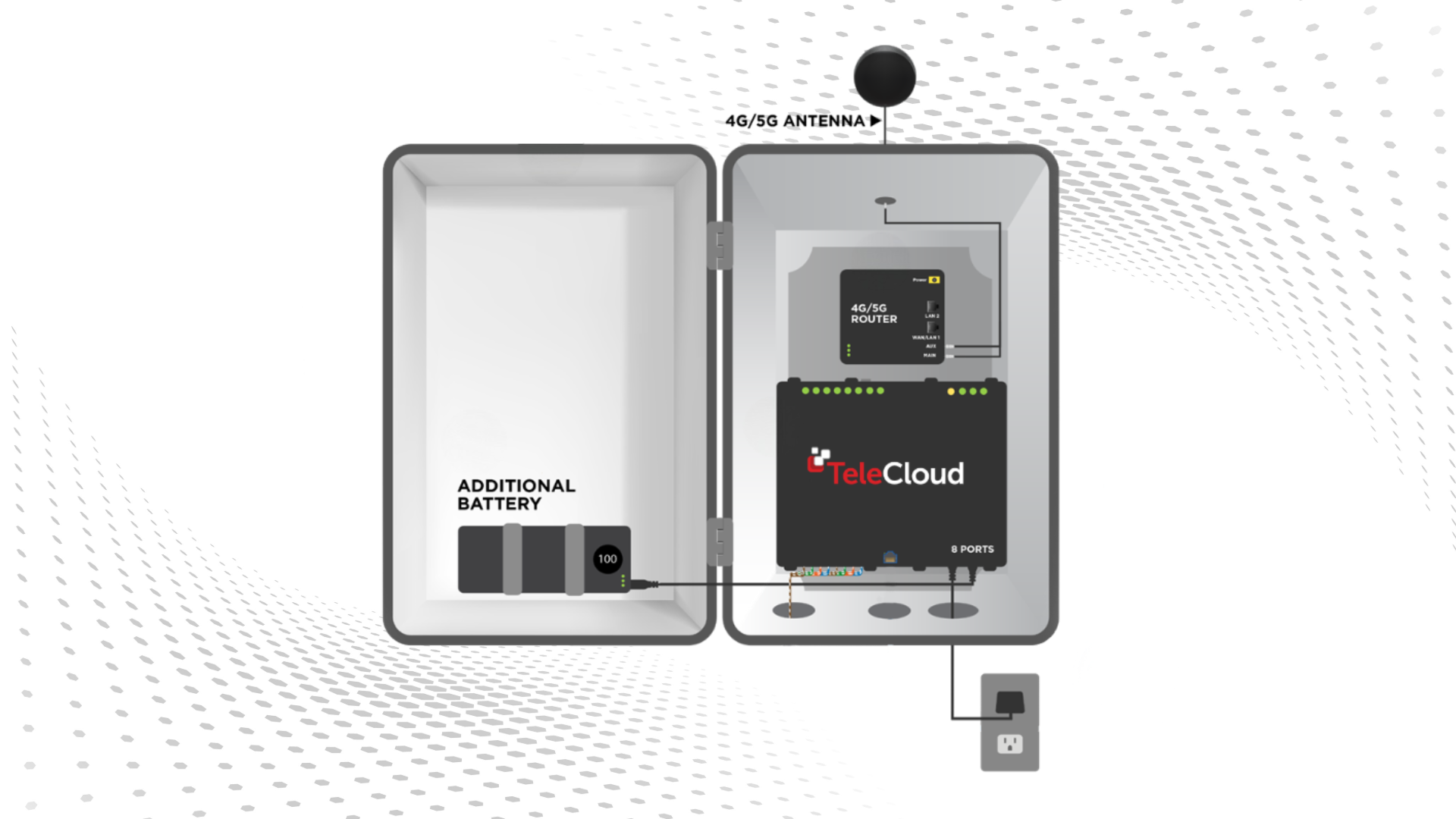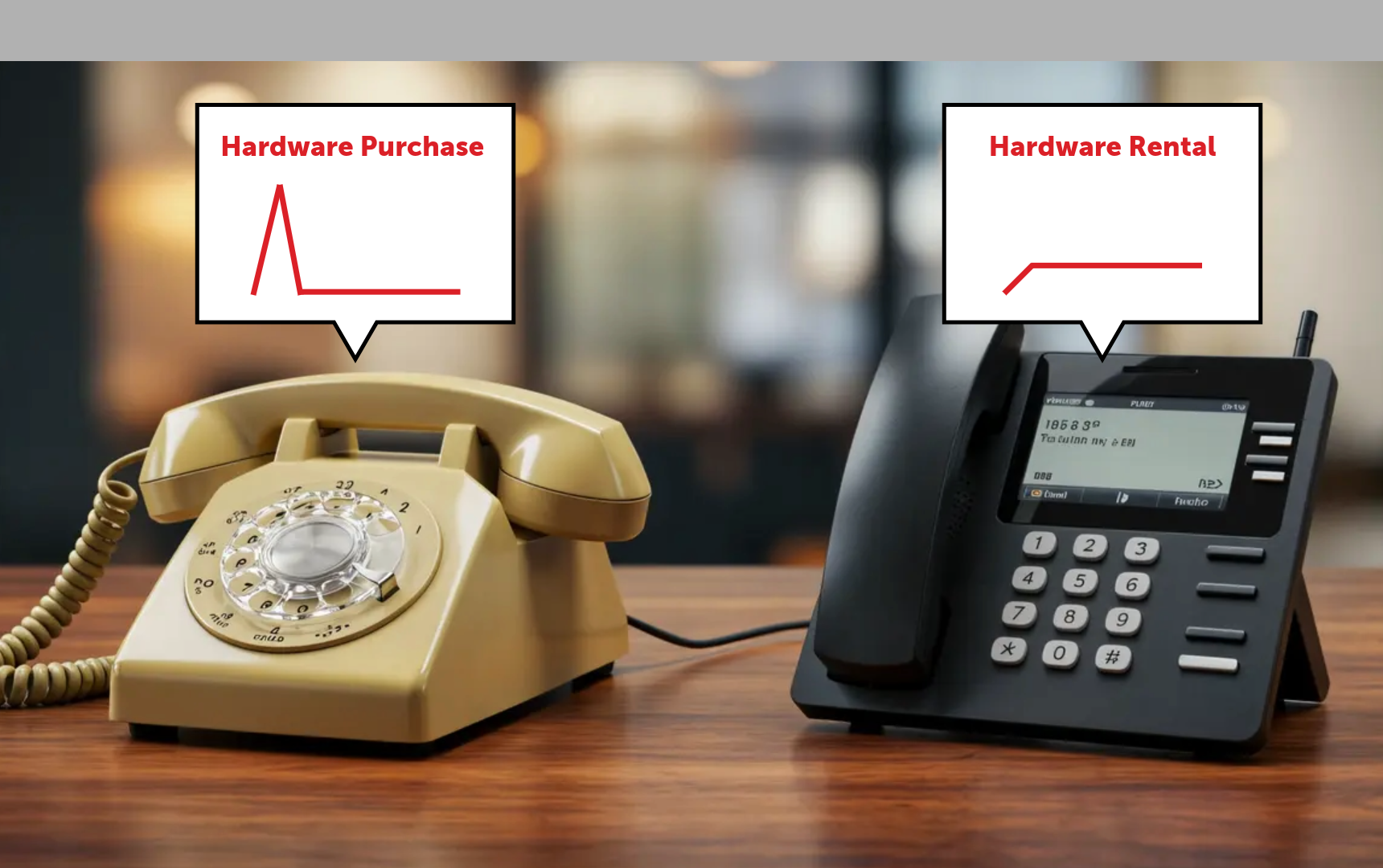What Kind of Network Switch Do I Need for VoIP Phones?
June 5th, 2025
5 min read

Switching to IP phones is one of the smartest moves a business can make to improve communication, flexibility, and customer experience, but it often raises a key technical question:
“What kind of network switch do I need for VoIP?”
It’s not the most exciting part of a phone system upgrade, but it might be the most important. The wrong switch can lead to dropped calls, poor audio quality, or slowdowns across your entire network. The right one? It ensures smooth, reliable, and scalable communication from day one.
At TeleCloud, we’ve helped hundreds of businesses design VoIP-ready networks, and time after time, it comes down to the switch.
This guide will break down what network switches do, why they matter for VoIP, and which features you actually need, so you can avoid common pitfalls and make confident, cost-effective decisions for your business.
What Is a Network Switch and Why Do IP Phones Need One?
At the most basic level, a network switch connects multiple devices, like computers, printers, and phones, to your local area network (LAN). It acts like a traffic controller, directing data between devices and out to the internet.
When it comes to IP phones, a switch is essential because your phone needs both power and a data connection. Unless you're using Wi-Fi (which we’ll touch on later), a switch is the bridge between your VoIP service and your phone system.
What Is PoE and Why Is It Recommended for VoIP Phones?
Power over Ethernet (PoE) is a major convenience in VoIP setups. It allows you to power your IP phone and send data over the same Ethernet cable, no need for a separate power adapter or outlet.
Why Businesses Prefer PoE:
- Cleaner setup: One cable, less clutter.
- Simplified moves/adds/changes: Easy to relocate phones without rewiring.
- More reliable: Fewer components mean fewer things to fail.
Can you use a non-PoE switch? Sure. But then you’ll need a separate power adapter for every phone, and that can get messy, especially in larger deployments.
Should You Use a Managed or Unmanaged Switch for VoIP?
This is where things start to get critical. Not all switches are created equal.
Unmanaged Switches: What They Don’t Do
An unmanaged switch is essentially plug-and-play. It passes traffic along without much control or customization. That might sound simple, but for VoIP, it’s a problem.
With unmanaged switches:
- You can’t separate voice and data traffic.
- You can’t prioritize voice over other types of data.
- You can’t monitor or manage performance issues effectively.
Managed Switches: Built for Business-Grade VoIP
A managed switch gives you control, visibility, and performance optimization. For VoIP, this is strongly recommended.
With a managed switch, you can:
- Create VLANs (Virtual Local Area Networks) to separate voice and data.
- Enable QoS (Quality of Service) to prioritize voice packets.
- Assign static IPs to manage and troubleshoot devices more easily.
If call quality matters (and it should), a managed switch is the way to go.
Need help deciding between switch types?
Don’t risk degraded call quality or overspending. Schedule a free consult with a TeleCloud VoIP expert to get personalized switch recommendations based on your setup.
What Are VLANs and How Do They Improve VoIP Call Quality?
A VLAN (Virtual Local Area Network) allows you to separate traffic on your network, even if it's running over the same physical cable. This is especially useful when you're sharing one Ethernet line for both a phone and a computer at a desk.
When your voice and data traffic are on separate VLANs:
- Voice traffic can be prioritized using QoS settings.
- You reduce the risk of audio delay, jitter, or dropped calls.
- Network segmentation makes troubleshooting and scaling easier.
Think of it like creating dedicated lanes on a highway—VoIP gets the fast lane, and other data stays out of the way. It’s one of those small technical tweaks that makes a big difference in real-world performance.
How to Choose the Right Switch Size and Type for Your Office
Start with the number of devices you need to support—phones, computers, access points, etc.—and plan for growth.
Common Business Switch Sizes:
- 24-port PoE switch: Good for small to mid-sized offices
- 48-port PoE switch: Ideal for larger offices or phone-heavy environments
- Stackable switches: Let you combine multiple units without adding complexity
Pro tip: Always leave room for expansion. If you max out a 48-port switch and need to add one more phone, you’re stuck buying another switch anyway. It’s better to build in a little breathing room up front.
Similarly, don’t forget you need room for a router, so you may need to connect another switch. If you have 24 phones to connect, you're going to need to buy more than a 24-port switch.
Also, consider centralized vs. decentralized setups. Avoid daisy-chaining smaller switches under desks or in remote offices—that creates failure points and support headaches.
What About Wi-Fi IP Phones? Are They a Good Option?
Wi-Fi VoIP phones offer flexibility, but they’re not always ideal for business-critical communication. While they work in some environments, wired connections are still preferred for reliability and call quality.
Wi-Fi Works Well For:
- Home offices or small teams
- Low call volume setups
- Strong business-grade Wi-Fi networks with QoS
Avoid Wi-Fi When:
- You have many concurrent calls
- Signal strength is inconsistent or there's interference
- Your network doesn’t support VLANs or QoS for voice traffic
Pro Tip: If you use Wi-Fi, ensure phones are on a dedicated SSID or VLAN, and access points support QoS to prioritize voice.
Bottom line: Use Wi-Fi selectively. It’s fine for a few users, but for most businesses, wired PoE is still the most reliable choice.
Switching from Legacy Systems? Here’s What to Know
Migrating from analog or digital systems to VoIP? Here’s how to prep:
Check Your Cabling:
- Cat5e or Cat6? You’re good to go.
- Cat3 or older? You’ll likely need to upgrade.
Old setups often used split-pair cabling, which won’t support modern VoIP.
Plan for Downtime:
- Schedule switch/cable upgrades during off-hours
- Pre-configure VLANs and IPs before cutover
- Test everything beforehand
Hidden Costs to Watch:
- Cabling labor and materials
- Power adapters if not using PoE
- Upgrades if your switch doesn’t support VLANs/QoS
Can’t run new cable? FIBRidge lets you power phones over legacy wiring—ideal for buildings with closed ceilings or limited access. It costs more upfront but avoids construction and keeps voice/data separate.
What Should You Avoid When Deploying Switches for VoIP?
1. Under-the-Desk Mini Switches
These little 4- or 5-port switches might seem convenient, but they introduce all kinds of problems—especially when people forget they’re there. They’re easy to unplug, cause mystery outages, and make troubleshooting harder.
“We see it all the time—someone adds a cheap switch under their desk, splits four devices, and then they call us wondering why their phone isn’t working.”
2. Daisy-Chaining Devices
Avoid connecting switch-to-switch-to-switch unless you’re using properly managed, stackable switches. Otherwise, you’re building in complexity and creating multiple failure points.
3. Skipping Cable Management
Whenever possible, use dedicated cabling for phones and computers. If you must share a cable, make sure your switch supports VLAN tagging and is properly configured.
Get Your Network Right, and the Rest Follows
Your VoIP system is only as good as the infrastructure supporting it—and at the center of that is your network switch. From call quality to system reliability and scalability, the switch you choose has a direct impact on business performance. When done right, it prevents headaches, reduces downtime, and ensures every call supports a great customer experience.
Call issues like lag, jitter, or dropped connections often have nothing to do with the phones themselves. They usually trace back to unmanaged switches, outdated cabling, or poor network design. Don’t let a small piece of hardware become the bottleneck for your entire communication system.
To avoid those problems—and future-proof your system—follow these proven best practices:
Use PoE switches to combine power and data on a single line
Choose managed switches with VLAN and QoS capabilities to protect call quality
Plan for expansion by selecting the right switch size and leaving room to grow
Evaluate existing cabling and infrastructure before deployment
Avoid consumer-grade or daisy-chained switches, which create points of failure
At TeleCloud, we help businesses move from outdated, static systems to intelligent, scalable communication platforms—starting with the network. We don’t just install phones; we engineer smarter systems that support every conversation, every time.
Not Sure Which Network Switch Fits Your Setup? Don’t guess your way through it. Talk to a VoIP expert at TeleCloud and get a tailored network design that supports crystal-clear communication, prevents costly mistakes, and sets you up for long-term success.
Topics:














